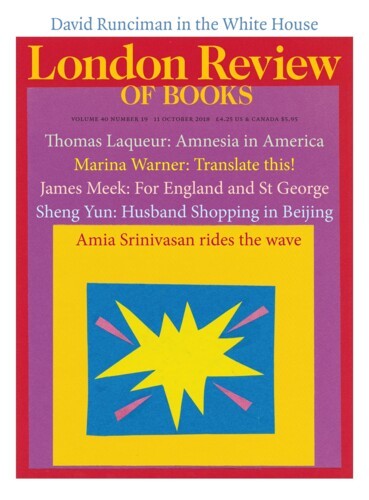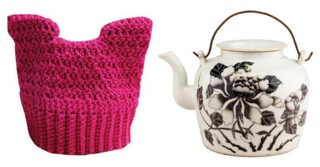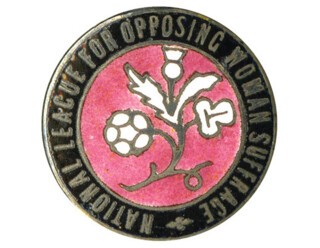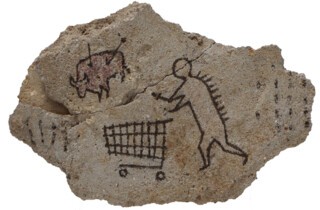Presumably the British Museum doesn’t have a giant inflatable banana in its collections or it would have been included in I Object: Ian Hislop’s Search for Dissent (until 20 January 2019) as Hislop’s personal contribution. In May 1989 Sonia Sutcliffe, wife of the Yorkshire Ripper, was awarded record-breaking libel damages of £600,000 against Private Eye. Standing outside the Royal Courts of Justice after the decision, Hislop, the Eye’s editor, told the press that if this was justice then ‘I am a banana.’ The Bananaballs Fund was duly launched to raise money to pay the fine and anyone contributing £100 or more got an inflatable of their own to wave in the face of the judgment. On appeal the damages were reduced and the libel law subsequently altered so that juries were no longer responsible for determining the level of awards. A win for the bananas, or at least a demonstration of the effectiveness of using a simple image to engage the attention of many more people than might otherwise concern themselves with the detail of your particular point.
In the art of dissent context can be all. There were places in the 1980s where deployment of the comedy banana was a much riskier strategy. The president of Zimbabwe, Canaan Banana, passed a law imposing heavy penalties on anyone making jokes about his name, thereby making a joke of himself. Authoritarian rulers are not noted for their sense of irony. They dread ridicule in part because they don’t understand how satire works. In 1831 Louis Philippe was foolish enough to object to Charles Philipon’s rendering of his jowly visage as a pear, poire having the double meaning in French of ‘idiot’. The Citizen King sued and the resulting trial and associated publicity provoked a proliferation of pear imagery on a scale of which Philipon could only have dreamed. The Prince Regent was more pragmatic. One of the most caricatured figures in the golden age of caricature, he was relentlessly attacked by James Gillray, who showed him farting, fornicating and, the ‘f’ word Prinnie dreaded more than any other, ‘fat’. The ‘Prince of Whales’ arranged for Gillray to receive an annuity of £200, whereupon the cartoons stopped.
I Object casts its net wide, from ancient Egypt to pussy hats, and embraces a range of motives and emotions. To dissent means to differ from the status quo but the expression of difference takes many forms, from a call to arms through mild irritation and teasing to simple regret. Downloadable posters urging revolution in Syria sit among defaced coins, mischievously misprinted Bibles and a surprising number of teapots. One, painted in mournful monochrome by Luo Fatai in 1913, reflects a world drained of colour since the fall of the Qing dynasty deprived the porcelain manufacturing centre of Jingdezhen of its royal patronage. Another, a jaunty piece of Worcester ware from the 1760s, conceals beneath its plump spout a delicately painted ‘45’ in reference to Number 45 of John Wilkes’s Radical paper the North Briton, which attacked Lord Bute’s ministry as ‘the foul dregs of power, the tools of corruption and despotism’. The issue was ordered to be burned, with the usual consequence that everybody heard about it. Benjamin Franklin, travelling from London to Winchester in 1768, remarked that for the first 15 miles of the journey every door he passed had ‘45’ daubed on it. Behind some of them, presumably, subversion extended to the tea table.
The exhibition design, which takes its cue from the cartoons, is cleverly conceived to group objects by means and ends, thus creating some cohesion for a collection of which the whole is not more than the sum of the parts, but rather vice versa: every object stands for a larger moment, position, or gesture. As an exhibition of material culture it illustrates, if it does not address, the question of how meaning is expressed in three-dimensional objects: how much is in the material, how much in the eye of the beholder? Anyone caught with the 45 teapot would be hard-pressed to deny Radical sympathies. But in 1989 Czech students signalled their support for Václav Havel by simply holding up their keys to show metaphorically that the door was open for him. The more intrinsically neutral the object the greater variety of meanings it can be made to bear. The hijab features in directly opposing contexts in Iran, worn at different times as an assertion of Islam in a secular state and, after the revolution, brandished by bare-headed women in defiance of theocracy.
Hislop is on the whole in favour of dissent, but wary of the smugness of posterity. Alongside the Soviet dissidents, anti-apartheid campaigners, suffragettes and others who have been judged in hindsight to have been a Good Thing, there are some whose opposition to the majority view looks less heroic. The National League for Opposing Woman Suffrage, represented by an elegant enamel badge and ribbon, had a much larger membership than the Women’s Social and Political Union, and most of its members were women. In their day they were not strictly speaking dissenters, but they are on the wrong side of history now. Nor does Hislop waste an opportunity to draw attention to the Daily Mail’s inglorious past. ‘Hoorah for the Blackshirts,’ it cries cheerily in 1934. Coming closer to home, however, the show loses some of its edge. Banksy’s intervention in the museum itself, a mock fragment of cave painting with a stick man pushing a shopping trolley, which survived on a gallery wall for several days before he drew attention to it on his website and it was removed, has been borrowed back. There is something self-congratulatory in this demonstration that the museum can take a joke, like a headmaster at the end of term indulging high spirits as long as they don’t go too far. Now, when the age of Dissent has become the age of Taking Offence, there are limits. The exhibition comes up to date in some areas – with plentiful jibes at the president of the United States, ‘Tuck Frump’ badges, and Trump and Putin dolls on sale in the gift shop – but not in others. No recent object so much as hints at the greatest subject of dissent in Britain in living memory, possibly since the Great Reform Bill. Among the button badges – ‘Black Lives Matter’, ‘Free Palestine’, ‘NHS not for sale’ – the absence of an ‘I voted Remain’ or ‘Bugger Brexit’ is striking. Perhaps there are none of those in the museum either.
Send Letters To:
The Editor
London Review of Books,
28 Little Russell Street
London, WC1A 2HN
letters@lrb.co.uk
Please include name, address, and a telephone number.




